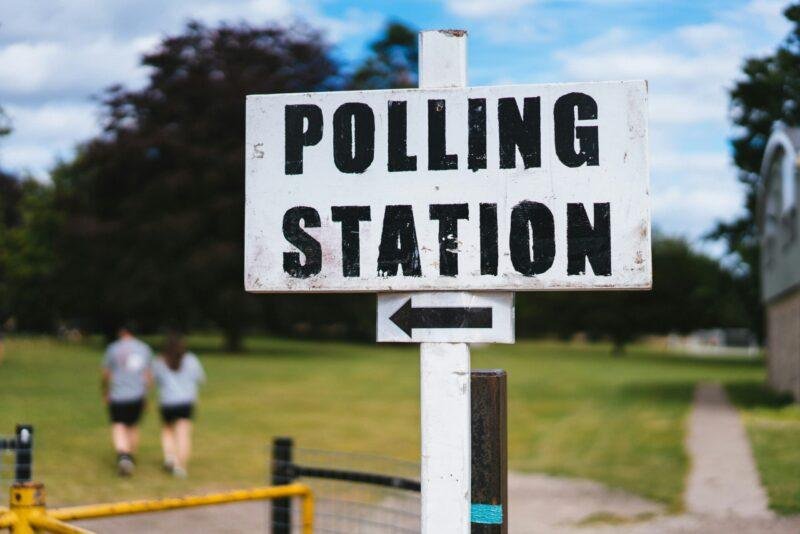Introduction to VoteOhio.gov
VoteOhio.gov serves as an essential online platform designed to assist voters in navigating the voting process in the state of Ohio. Operated by the Ohio Secretary of State’s office, this website consolidates a wide array of voting-related information, making it an invaluable resource for both new and seasoned voters alike. The primary objective of VoteOhio.gov is to ensure that all Ohioans have access to accurate, reliable, and comprehensive data regarding elections, voter registration, polling locations, and voting procedures.
One of the key advantages of using VoteOhio.gov is its commitment to providing up-to-date information. Given the dynamic nature of electoral laws and procedures, it is crucial that voters have access to the most current data. The website is regularly maintained and updated, thereby fostering trust among its users. Voters can find guidance on how to register, check their registration status, find their polling place, and learn about the different voting methods available, including early voting and mail-in ballots.
More informationUnderstanding Voting Residence for Service Members and Their FamiliesMoreover, having a centralized source for election-related information promotes civic engagement by simplifying the process for voters. By eliminating confusion and misinformation, VoteOhio.gov encourages every eligible citizen to participate actively in the electoral process. The platform’s user-friendly design further enhances accessibility, allowing users to quickly locate the information they need. In this way, VoteOhio.gov plays a critical role in empowering Ohio voters and promoting informed participation in elections.
In conclusion, VoteOhio.gov is not just a mere informational tool; it is a vital resource for ensuring that all Ohio voters can engage in the democratic process confidently and knowledgeably. By relying on this official source, voters can navigate the complexities of voting with ease and accuracy.
How to Register to Vote Online
Registering to vote online in Ohio is a straightforward process designed to facilitate participation in elections. To begin, you must ensure that you meet the eligibility requirements mandated by Ohio law. Prior to registering, individuals must be U.S. citizens, residents of Ohio for at least 30 days before the election, and at least 18 years old on or before the next General Election. In cases where voters are 17 years old and will turn 18 by election day, they are also eligible to register.
More informationUnderstanding Government Growth: A Historical Analysis of State ExpansionTo register online, you must possess a valid Ohio driver’s license or state ID card, as the identification will be utilized for verification purposes. Individuals without these forms of identification may need to register using a paper form instead. It is essential to have your Social Security number available during the registration process, as this may also be requested for identity verification.
The first step is to visit VoteOhio.gov. From there, navigate to the online voter registration section and follow the prompts. Curated instructions will guide you through each step of the form-filling process. Make sure to enter your information accurately, including your name, address, and date of birth. After completing the form, review your information before submission to avoid any potential errors.
It is crucial to adhere to registration deadlines to ensure your ability to vote. For most elections, the deadline to register or update your voter registration is 30 days before the election date. By completing your registration online ahead of time, you can confirm that your information is up to date and ready for your participation in the electoral process.
More informationMorning Headlines: Key Updates for April 10, 2025Checking and Updating Your Voter Registration
Voting is a fundamental right, and ensuring that your voter registration is accurate is crucial to participating effectively in elections in Ohio. Checking and updating your voter registration can be easily accomplished through the official platform, VoteOhio.gov. This resource is designed to provide voters with the tools necessary to confirm their registration status and make any necessary updates.
To check your registration status on VoteOhio.gov, users can follow a straightforward process. By navigating to the site, you will find a designated section for checking the status of your voter registration. You will typically need to enter personal information, including your name, date of birth, and county of residence. Once submitted, the system will return your registration status, indicating whether you are registered to vote and providing details such as your polling place and voting precinct.
Maintaining current and accurate voter registration information is vital. Changes such as a new address, name change, or even changes in voting status can affect your eligibility to vote. Therefore, if there is any discrepancy found during the status check, updating your voter registration is the next important step. VoteOhio.gov offers an easy-to-follow process for updating your information online. Users must provide the required documents to support any changes, ensuring a smoother transition to the updated records.
More informationThe Safeguard American Voter Eligibility Act (SAVE Act) of 2025: A Detailed ExaminationAdditionally, updating your voter registration should be done well before an election, as deadlines apply based on the election calendar. Regularly checking your voter registration and keeping your information current helps safeguard your voting rights and contributes to the integrity of the democratic process in Ohio. By utilizing the resources available on VoteOhio.gov, voters can ensure a seamless voting experience on election day.
Absentee and Early In-Person Voting
Voting absentee and participating in early in-person voting are two essential options available to Ohio voters, allowing them to cast their ballots conveniently and securely. Absentee voting enables individuals to vote by mail rather than attending polling places on Election Day. This method can be especially advantageous for those who may be unable to vote in person due to health, travel, or scheduling reasons.
To request an absentee ballot in Ohio, voters must complete an absentee ballot application, which can be conveniently obtained from the official site, VoteOhio.gov. The application must be filled out with the appropriate personal information, including name, address, and the reason for voting absentee. Once completed, voters can send the application to their local Board of Elections, either by mail, fax, or email, provided it includes a signature. It is recommended to submit the application as early as possible to ensure there is ample time to receive the ballot through the mail. Completed absentee ballots must then be returned by mail and postmarked by Election Day, ensuring they are counted.
In addition to absentee voting, Ohio also offers a designated early voting period, which begins 28 days before an election and ends just before Election Day. During this time, voters can visit designated early voting locations and cast their ballots in person. Early voting locations are typically available in each county, and interested voters can find their nearest site via VoteOhio.gov. The early in-person voting process not only allows voters to avoid long lines at polling places but also provides the flexibility to vote at a time that best suits their schedules.
By taking advantage of absentee and early in-person voting options, Ohio residents can ensure their voices are heard while navigating their busy lives. These methods increase accessibility and help promote higher voter turnout, contributing positively to the democratic process.
Understanding the Voting Schedule
Being informed about the voting schedule is crucial for every Ohioan aiming to participate in elections. The timeline for voting encompasses several key dates, including registration deadlines, early voting periods, absentee ballot requests, and Election Day itself. Understanding these will ensure that eligible voters do not miss the opportunity to cast their ballots.
In Ohio, the deadline to register to vote is typically 30 days before an election. It is essential to check your registration status well in advance to avoid any surprises. Voters can register online through voteohio.gov, by mail, or in-person at designated locations. After the registration period closes, it is no longer possible to register for that election cycle.
Early voting in Ohio offers a flexible alternative to casting your vote on Election Day. Generally, early voting begins 28 days prior to the election and continues until the Friday before Election Day. During this period, voters can cast their ballots at designated early voting locations. Each county provides a variety of hours for early voting, allowing voters to select a convenient time to participate.
Absentee ballot requests are also part of the voting schedule. Voters can request an absentee ballot online, by mail, or in person. Typically, the deadline to request an absentee ballot is one week before the election. It is vital to submit these requests early to ensure that ballots are received in time to be filled out and returned by the Election Day deadline.
Finally, Election Day itself is when all registered voters can cast their votes at their designated polling places. Polling locations open at 6:30 AM and close at 7:30 PM, giving Ohioans ample time to participate. Being mindful of the voting schedule ensures that you can execute your civic duty without complications. Planning ahead will foster greater participation and empower individuals to have a voice in their government.
What’s on the Ballot: A Guide to the Contents
When preparing to vote in Ohio, understanding what will be presented on the ballot is essential for making informed decisions. Each ballot typically includes a list of candidates running for various offices, alongside specific issues and measures that may require voter approval. With the unique characteristics of each election, voters should familiarize themselves with the contents to ensure their voices are accurately represented.
To access the information regarding candidates and issues, Ohio voters can utilize the resources available on VoteOhio.gov. This official state website provides voters with essential tools to view upcoming election details. On the site, you can find sample ballots tailored to your precinct, allowing you to see firsthand what will be on your ballot. This feature is particularly helpful as it enables voters to review candidates’ names, party affiliations, and any pertinent measures or issues that may influence their voting decisions.
In addition to sample ballots, VoteOhio.gov offers education materials that can help demystify the voting process. Voters can find explanations of various issues and measures, facilitating a deeper understanding of the implications of their votes. By reviewing these resources, voters can ensure they are not only aware of what is on the ballot but also informed about how their choices align with their values and concerns.
Moreover, it is advisable for voters to familiarize themselves with the candidates’ platforms and the context of any issues, as election seasons can bring about complex local and statewide matters. By taking time to research, voters can engage more meaningfully in the democratic process and contribute to shaping their communities.
Finding Your Polling Location
Knowing your designated polling location is a crucial step in ensuring your participation in the electoral process in Ohio. Utilizing resources like VoteOhio.gov can greatly simplify the process of finding where you need to cast your vote. The website offers an array of tools that assist voters in locating their assigned polling places, which can vary based on your registered address. Understanding the significance of knowing your polling location cannot be overstated; failing to arrive at the correct site can lead to unnecessary complications on election day.
To begin, navigate to VoteOhio.gov and look for the “Find Your Polling Place” link. By entering your details, including your name, date of birth, and county, you will receive accurate information about your polling location. It is essential to verify your polling place prior to election day, as such locations may change due to redistricting or other administrative updates. Check the website closer to the election date to confirm your polling station and ensure there are no last-minute changes.
In addition to the official website, voters can access local resources to find their polling locations. County boards of elections often provide contact information for further inquiries. You can also call these boards or visit in person for assistance. Many community organizations and social media platforms share information about polling places and offer guidance, particularly as election day approaches.
Understanding where to vote and identifying your polling location is vital for a smooth voting experience. By utilizing VoteOhio.gov and staying informed through local channels, you can take proactive measures to ensure your voice is heard in the electoral process. This preparation can help alleviate potential stress on election day, allowing you to focus on exercising your right to vote.
ID Requirements to Vote in Ohio
In Ohio, presenting an appropriate form of identification is a crucial requirement for voters aiming to cast their ballots successfully. This regulation is in place to safeguard the integrity of the electoral process. To fulfill the ID requirements, voters must provide one of the following acceptable forms of identification: a Ohio driver’s license, a state ID card issued by the Ohio Bureau of Motor Vehicles, a U.S. passport, or a military identification card. It is essential that the identification presented includes a photo and current address to ensure compliance with state regulations.
For those individuals who do not possess any of the acceptable forms of ID, alternative measures can be taken. Voters may utilize a utility bill, bank statement, government check, paycheck, or other government documents that include their name and current address. However, it is important to note that while these documents can be used for verification when registering to vote, they do not substitute for photo identification on the day of the election.
Failure to present an acceptable form of ID may lead to significant implications on Election Day. Voters without proper identification will be unable to cast their votes in person. Instead, they may be required to cast a provisional ballot, which will only be counted once the individual provides the necessary ID to the county board of elections within a specified timeframe. Therefore, it is advisable for voters to prepare ahead of time and verify their voting eligibility according to Ohio’s ID requirements. Ensuring compliance with these regulations not only promotes a smooth voting process but also reinforces the democratic framework inherent in the electoral system.
Viewing Election Results
Accessing election results in Ohio has become significantly more straightforward through the state’s official website, VoteOhio.gov. The platform allows voters to seamlessly view both preliminary and final results, offering a comprehensive overview of electoral outcomes. Election results are typically published on the site shortly after polls close on Election Day, enabling the public to stay informed about the status of various races across the state. However, it’s important to note that while preliminary results are made available almost immediately, these figures are subject to change as more ballots are counted in the days following the election.
The types of results accessible through VoteOhio.gov vary widely, ranging from statewide contests to local elections. Voters can find results for governor, state legislature, and other key offices, along with local races and ballot issues. Additionally, the site provides breakdowns of votes by county, allowing for a more detailed understanding of how specific regions voted. This granularity can be particularly useful for stakeholders wishing to gauge community sentiment or for candidates analyzing their performance in various areas.
Interpreting the results presented on VoteOhio.gov is relatively straightforward, as the platform is designed with user-friendliness in mind. Voters can view total votes cast for each candidate in a race, as well as percentages that reflect their share of the overall vote. Moreover, the site often includes nonpartisan analysis and visual aids, such as graphs or charts, to further clarify the implications of the results. Understanding these figures is crucial for voters, as they reflect the democratic engagement within their community and indicate how policies may shift based on electoral choices.
Additional Resources and Support
VoteOhio.gov serves as a comprehensive platform for voters in Ohio, providing not only essential information but also a range of additional resources geared towards enhancing the voting experience. Among the most beneficial features available on the website is the Frequently Asked Questions (FAQs) section. This area addresses common inquiries related to voting procedures, registration, polling locations, and identification requirements. By consulting the FAQs, voters can often find quick answers to their concerns, which can alleviate confusion and ensure that they are well-prepared for Election Day.
In addition to the FAQs, VoteOhio.gov offers direct contact information for those seeking personalized assistance. Voters can easily reach out to local Board of Elections officials or state representatives through provided phone numbers and email addresses. This option is particularly important for individuals who may encounter unique challenges during the voting process or require further clarification on particular issues. Prompt and professional guidance can significantly enhance a voter’s confidence and readiness.
Furthermore, the website includes links to additional electoral resources that can provide more in-depth information about upcoming elections, candidate profiles, and civic engagement initiatives. These resources are pivotal for voters who wish to become more informed and make decisions that align with their values and community needs. As voters access these tools, they can gain a clearer understanding of the electoral landscape in Ohio, empowering them to cast their ballots with conviction.
Utilizing the various resources available on VoteOhio.gov is crucial for all voters in Ohio. Engaging with FAQs, reaching out for support, and exploring external resources are effective ways to foster an informed electorate. This proactive approach not only enhances individual voting experiences but also contributes to the overall health of the democratic process in the state.




